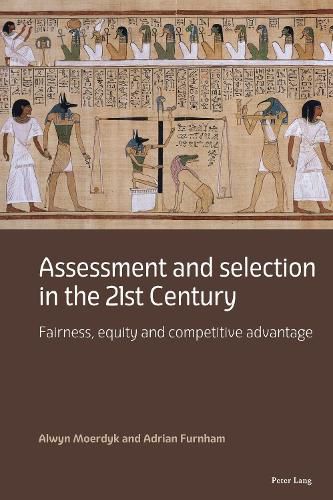Readings Newsletter
Become a Readings Member to make your shopping experience even easier.
Sign in or sign up for free!
You’re not far away from qualifying for FREE standard shipping within Australia
You’ve qualified for FREE standard shipping within Australia
The cart is loading…






This title is printed to order. This book may have been self-published. If so, we cannot guarantee the quality of the content. In the main most books will have gone through the editing process however some may not. We therefore suggest that you be aware of this before ordering this book. If in doubt check either the author or publisher’s details as we are unable to accept any returns unless they are faulty. Please contact us if you have any questions.
This book is about the assessment of people in the workplace and examines what assessment is and the various forms it takes and how these principles and practices can be applied to improve job satisfaction, productivity and the fairness with which organisational objectives are achieved.
Section l examines some of the background and social issues that are shaping the assessment enterprise and the view that management in general and psychological assessment is part of the <>. Psychological assessment techniques and methods are increasingly being seen by some as biased against certain groups. The nature of measurement and assessment are evaluated and the basic principles of drawing up a psychological measuring instrument, as well as the history of assessment in the workplace, are outlined.
Section II examines basic psychometric theory, including how assessment test scores are interpreted, and combined to yield a single pass/fail, accept/reject or go/no go decision. The issues of reliability (or consistency) and those of validity, i.e., the extent to which a measure measures what it claims to measure, are examined. In Chapter 7, the concepts of fairness and equity are outlined, especially gender and cultural equity that are so important in many parts of the world today.
Section III examines how assessment principles are applied in organizations (Chapter 8) and with respect to Intelligence (Chapter 9), Personality (Chapter 10), Competencies (Chapter 11), Honesty and Integrity (Chapter 12), Interviewing (Chapter 13) and Assessment Centres (Chapter 14). The final section pulls all the threads together and asks What next?
$9.00 standard shipping within Australia
FREE standard shipping within Australia for orders over $100.00
Express & International shipping calculated at checkout
This title is printed to order. This book may have been self-published. If so, we cannot guarantee the quality of the content. In the main most books will have gone through the editing process however some may not. We therefore suggest that you be aware of this before ordering this book. If in doubt check either the author or publisher’s details as we are unable to accept any returns unless they are faulty. Please contact us if you have any questions.
This book is about the assessment of people in the workplace and examines what assessment is and the various forms it takes and how these principles and practices can be applied to improve job satisfaction, productivity and the fairness with which organisational objectives are achieved.
Section l examines some of the background and social issues that are shaping the assessment enterprise and the view that management in general and psychological assessment is part of the <>. Psychological assessment techniques and methods are increasingly being seen by some as biased against certain groups. The nature of measurement and assessment are evaluated and the basic principles of drawing up a psychological measuring instrument, as well as the history of assessment in the workplace, are outlined.
Section II examines basic psychometric theory, including how assessment test scores are interpreted, and combined to yield a single pass/fail, accept/reject or go/no go decision. The issues of reliability (or consistency) and those of validity, i.e., the extent to which a measure measures what it claims to measure, are examined. In Chapter 7, the concepts of fairness and equity are outlined, especially gender and cultural equity that are so important in many parts of the world today.
Section III examines how assessment principles are applied in organizations (Chapter 8) and with respect to Intelligence (Chapter 9), Personality (Chapter 10), Competencies (Chapter 11), Honesty and Integrity (Chapter 12), Interviewing (Chapter 13) and Assessment Centres (Chapter 14). The final section pulls all the threads together and asks What next?